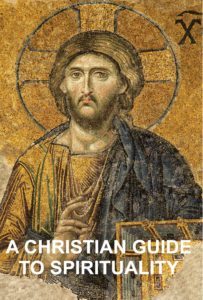Stephen W. Hiemstra's Blog, page 131
January 31, 2021
Oración Dia 11
 Stephen W. Hiemstra
Stephen W. HiemstraSeñor soberano.
Dios de los vivos y los muertos.
Gracias por preocuparte lo suficiente para nosotros que enviaste a Jesús al infierno y regreso por nuestro beneficio.
Mantienes nuestros corazones y mentes a salvo de una fascinación por el mal.
Pones nuestras mentes en el cielo para que nuestros corazones puedan descansar contigo, ahora y siempre.
En el nombre del Padre, del Hijo, y del Espíritu Santo, Amén.
Oración Dia 11
Ver también:
Gospel as Divine Template
Otras formas de participar en línea:
Sitio del autor: http://www.StephenWHiemstra.net,
Comprar Libro: http://www.T2Pneuma.com.
Boletín informativo: https://bit.ly/Begone_2021
The post Oración Dia 11 appeared first on T2Pneuma.net.
Gebetstag 11
Von Stephen W. Hiemstra
Souveräner Herr,
Gott der Lebenden und der Toten.
Danke dir, daß du dich genug um uns gekümmert hast, daß du Jesus zu unserem Vorteil in die Hölle und zurück geschickt hast.
Schütze du unsere Herzen und Gedanken vor der Faszination des Bösen.
Setze unseren Geist auf den Himmel, damit unser Herz jetzt und immer bei dir ruhen können.
Im Namen des Vaters, des Sohnes und des Heiligen Geistes, Amen.
Gebetstag 11
Siehe auch:
Glaubens Gebet
Andere Möglichkeiten, sich online zu engagieren:
Autoren Seite: http://www.StephenWHiemstra.net
Herausgeber Seite: http://www.T2Pneuma.com
Mitteilungsblatt: https://bit.ly/Begone_2021
The post Gebetstag 11 appeared first on T2Pneuma.net.
January 29, 2021
Hell
“He descended to hell.”Ω
By Stephen W. Hiemstra
What is hell?
Scripture has many colorful terms that translate into the English word for hell. Among them are: Sheol (OT only; 65 verses), the Abyss (or bottomless pit; 13), Gehenna (NT only; 11), Hades (9), Abaddon (7), and place of darkness (1). Jesus’ favorite term was Gehenna which refers to a dump in the Valley of Hinnom near Jerusalem where garbage was burned (BDAG 1606).
The list of words for hell here is, however, incomplete because most of the colorful expressions referring to hell are metaphorical. For example, an angel in Revelation 18:2 cries out in John’s vision:
“Fallen, fallen is Babylon the great! She has become a dwelling place for demons, a haunt for every unclean spirit, a haunt for every unclean bird, a haunt for every unclean and detestable beast . . .”
In other words, hell is a kind of prison reserved for the demons, the sinful, and the ritually unclean—all sorts of creatures that oppose heaven and God himself (Isa 7:11). Hell is sealed for everyone, except for God (Job 26:6).
Non-biblical visions of hell also exist. For example, C.S. Lewis (1973, 10–11) pictures hell as a place where people voluntarily move further and further apart.
So why does Jesus go to hell for three days?
The culturally expected answer in the first century would have been that Jesus was dead and that was where dead people went. We read, for example: “For in death there is no remembrance of you; in Sheol who will give you praise?” (Ps 6:5) But Jesus was not just another dead guy!
A better answer is that with the crucifixion, God’s sovereignty over heaven and earth—including hell—was confirmed (Ps 139:8). This might explain, for example, why Jesus’ death was accompanied by an earthquake and by resurrection of dead saints from tombs in Jerusalem (Matt 27:51-54). Of course, later with the resurrection death and Hades itself were overthrown.
The best answer to the question is that the reason why Jesus descended into hell remains a mystery. But, hell’s existence is no longer a mystery—Jesus went there.
References
Bauer, Walter (BDAG). 2000. A Greek-English Lexicon of the New Testament and Other Early Christian Literature. 3rd ed. Ed. Frederick W. Danker. Chicago: University of Chicago Press. .
Faith Alive Christian Resources (FACR). 2013. The Heidelberg Catechism. Cited: 30 August, 2013. Online: https://www.rca.org/sslpage.aspx?pid=372.
Lewis, C. S. 1973. The Great Divorce: A Dream (Orig Pub 1946). New York: HarperOne.
Presbyterian Church in the United States of America (PC USA). 1999. The Constitution of the Presbyterian Church (U.S.A.)—Part I: Book of Confession. Louisville, KY: Office of the General Assembly.
Hell
Also see:
Preface to A Christian Guide to Spirituality
Other ways to engage online:
Author site: http://www.StephenWHiemstra.net
Purchase Book: http://www.T2Pneuma.com
Newsletter: https://bit.ly/Begone_2021
The post Hell appeared first on T2Pneuma.net.
El Infierno
 “Descendio a los infiernos” [1]
“Descendio a los infiernos” [1]Por Stephen W. Hiemstra
¿Qué es el infierno?
La escritura santa tiene muchos términos de colores que traducen en la palabra en Español para el infiernos. Ellas incluyen: Seol (Testamento Antiguo solo; 65 versos), el Abismo (o pozo sin fondo; 13), la Gehena (Testamento Nuevo solo; 11), Hades (9), Abaddon (7), y lugar de las tinieblas (1). El término favorito de Jesus era Gehena que refiere a un vertedero de la valle de Hinom cerca de Jerusalén donde se quemaba la basura [2].
La lista de palabras por el infierno aquí es, sin embargo, incomplete porque la mayoría de los expresiones de colores que refiere al infierno estan metaforica. Por ejemplo, el ángel en Apocalipsis 18:2 grita en un visión de Juan:
“¡Cayó, cayó la gran Babilonia! Se ha convertido en habitación de demonios, en guarida de todo espíritu inmundo y en guarida de toda ave inmunda y aborrecible …”
In otras palabras, el infierno es un tipo de cárcel reservado para los demones, los pecadores, y los inmundo ritualmente—todos tipos de criaturas que oponian de el cielo y Dios mismo (Isa 7:11). El infierno está sellado para todos, excepto Dios (Job 26:6).
También existen visiónes no-biblicos del infierno. Por ejemplo, C.S. Lewis (1973, 10-11) escribi que el infierno esta un lugar donde la gente se mueve voluntariamente más y más separados.
¿Entonces, por qué se vaya Jesús al infierno para tres días?
La repuesta culturalmente se espera en el siglo primero sería que Jesus fue muerto y allí era el lugar donde los muertos vayan. Por ejemplo, leemos: “Porque no hay en la muerte memoria de Ti; En el Seol, ¿quién Te da gracias?” (Ps 6:5 NBH) ¡Pero, Jesus no era solamente un otro tipo muerto!
Una repuesta mejor es que con la crucifixion, la soberania de Dios sobre el cielo y la tierra—incluso la infierno—era confirmado (Ps 139:8). Esto podria explicar, por ejemplo, por qué la muerte de Jesus era acompañado por un terremoto y por la resureccion de santos muerto de tumbas en Jerusalén (Matt 27:51-54) [3].
La repuesta más major a la pregunta es que la razón porque Jesús descendió a los infiernos sigue siendo un misterio. Pero, la existencia de la infierno no esta ninguna más un misterio—Jesús fue allí.
Notas
[1] Iglesia Presbiteriana (2009, 35).
[2] γέεννα (BDAG 1606).
[3] Por supuesto, más tarde muerte y Hades tambien fueron derrocados con la resurección.
Referencias
Iglesia Presbiteriana (E.U.A.) 2009. El Libro de Adoración. Preparado por la Oficina de Teología y Adoración. Louisville, KY: Geneva Press.
Lewis, C. S. 1973. The Great Divorce: A Dream (Orig Pub 1946). New York: HarperOne.
El Infierno
Ver también:
Prefacio de La Guía Cristiana a la Espiritualidad
Otras formas de participar en línea:
Sitio del autor: http://www.StephenWHiemstra.net
Comprar Libro: http://www.T2Pneuma.com
Boletín informativo: https://bit.ly/Begone_2021
The post El Infierno appeared first on T2Pneuma.net.
Hölle
Von Stephen W. Hiemstra
“Hinabgestiegen in das Reich des Todes.” Ω
Was ist Hölle?
Die Schrift hat viele farbenfrohe Begriffe, die sich in das englische Wort für Hölle übersetzen lassen. Unter ihnen sind: Sheol (nur AT; 65 Verse), der Abyss (oder bodenlose Grube; 13), Gehenna (nur NT; 11), Hades (9), Abaddon (7) und Ort der Dunkelheit (1). Jesu Lieblingsbegriff war Gehenna, der sich auf eine Müllkippe im Tal von Hinnom in der Nähe von Jerusalem bezieht, wo Müll verbrannt wurde(BDAG 1606).
Die Liste der Wörter für die Hölle hier ist jedoch unvollständig, da die meisten farbenfrohen Ausdrücke, die sich auf die Hölle beziehen, metaphorisch sind. Zum Beispiel schreit ein Engel in Offenbarung 18:2 in Johannes Vision:
Sie ist gefallen, sie ist gefallen, Babylon, die Große, und ist eine Behausung der Dämonen geworden und ein Gefängnis aller unreinen Geister und ein Gefängnis aller unreinen Vögel und ein Gefängnis aller unreinen und verhassten Tiere.
Mit anderen Worten, die Hölle ist eine Art Gefängnis, das den Dämonen, den Sündigen und den rituell Unreinen vorbehalten ist—allerlei Kreaturen, die sich dem Himmel und Gott selbst widersetzen (Isa 7:11). Die Hölle ist für alle versiegelt, außer für Gott (Job 26:6).
Es gibt auch nichtbiblische Visionen der Hölle. Zum Beispiel stellt C. S. Lewis (1973, 10–11) die Hölle als einen Ort dar, an dem sich Menschen freiwillig immer weiter auseinander bewegen.
Wieso fährt Jesus drei Tage lang zur Hölle?
Die kulturell erwartete Antwort im ersten Jahrhundert wäre gewesen, daß Jesus tot war und dorthin gingen alle Toten. Wir lesen, zum Beispiel: “Denn im Tode gedenkt man deiner nicht; wer wird dir bei den Toten danken?” (Ps 6:6) Aber Jesus war nicht nur ein anderer Toter!
Eine bessere Antwort ist, dass mit der Kreuzigung Gottes Souveränität über Himmel und Erde—einschließlich der Hölle—bestätigt wurde (Ps 139:8). Dies könnte zum Beispiel erklären, warum der Tod Jesu von einem Erdbeben und der Auferstehung toter Heiliger aus Gräbern in Jerusalem begleitet wurde (Matt 27:51-54). Natürlich wurden später mit der Auferstehung der Tod und der Hades selbst gestürzt.
Die beste Antwort auf die Frage ist, daß der Grund, warum Jesus in die Hölle hinabstieg, ein Rätsel bleibt. Aber die Existenz der Hölle ist kein Geheimnis mehr—Jesus ging dorthin.
Verweise
Bauer, Walter (BDAG). 2000. A Greek-English Lexicon of the New Testament and Other Early Christian Literature. 3rd ed. Ed. Frederick W. Danker. Chicago: University of Chicago Press. .
Lewis, C. S. 1973. The Great Divorce: A Dream (Orig Pub 1946). New York: HarperOne.
Hölle
Siehe auch:
Einleitung auf Ein Christlicher Leitfaden zur Spiritualität
Andere Möglichkeiten, sich online zu engagieren:
Autoren Seite: http://www.StephenWHiemstra.net
Herausgeber Seite: http://www.T2Pneuma.com
Mitteilungsblatt: https://bit.ly/Begone_2021
The post Hölle appeared first on T2Pneuma.net.
January 26, 2021
Nouwen: Mastered by the Holy Spirit

Henri Nouwen. 2007. The Selfless Way of Christ: Downward Mobility and the Spiritual Life. Maryknoll, NY: Orbis Books.
Review by Stephen W. Hiemstra
My first ministry as an adult in the early 1980s was a summer program for high school and college age students. As my kids began graduating and taking up life as adults, I noticed a disturbing trend. The majority of them—those not disciplined enough to stay in school to earn a professional degree—had to leave Northern Virginia because the cost of living was simply too high. I coined the phrase, downward mobility, to describe the generational schism this dilemma caused.
IntroductionUntil I heard about Henri Nouwen’s book, The Selfless Way of Christ: Downward Mobility and the Spiritual Life, I had never heard anyone else use my phrase—downward mobility. For Nouwen, downward mobility is conscious decision to resist the idolatry of a lifestyle focused on upward mobility (27) and simply to imitate Christ (38). Nouwen writes: The Holy Spirit leads us on the downward way, not to cause us to suffer or to subject us to pain and humiliation, but rather to help us to see God present in the midst of our struggles (47). The Apostle Paul summed it up this way:
I have learned in whatever situation I am to be content. I know how to be brought low, and I know how to abound. In any and every circumstance, I have learned the secret of facing plenty and hunger, abundance and need. I can do all things through him who strengthens me (Philippians 4:11-13 ESV).
At one point, my church used this last sentence (I can do all things through him who strengthens me) as a tie-shirt slogan for our Vacation Bible School camp. These words are powerful encouragement for those of us traveling the downward way.
Leadership TemptationsSatan tempts us daily to return to the path of upward mobility. Following Luke 4, Nouwen (49) sees Satan’s three primary temptations in ministry as:
The temptation to be relevant (turn stones into bread);The temptation to be spectacular (throw yourself off the temple); andThe temptation to be powerful (rule as king) [1].RelevanceThis first temptation can be the source of a lot of pain. Nouwen (50) observes: Doctors can heal; lawyers can defend; bankers can finance; social workers can restructure; but what can you [as Christian, minister, or pastor] do? Our natural tendency is to fix things; not to trust in God’s transforming power.
Draw Attention to OurselvesThe second temptation is to focus on ourselves and serve our own needs for attention and acceptance. Here we need to make space for God in our own lives so that he can use us to be present in the lives of the people around us (58). Nouwen commends a life of intimate communion with God through the disciplines of solitude, silence, and prayer (59). If our ministry is not about God, it will ultimately become tiresome and pointless.
PowerThe third temptation is to be powerful. Nouwen observes that: Power can take many forms: money, connections, fame, intellectual ability, skills (61). We want to be in control. To be a servant of Christ, Nouwen reminds us, is to be a [humble] friend of Christ (65).
DisciplineNouwen observes that the tension between our vocation as Christians and these temptations is a lifelong challenge (69). Discipline is required but: The discipline of the Christian disciple is not to master anything [like an athlete, student, or professional] but rather to be mastered by the Spirit (70). Nouwen highlights these 3 disciplines:
The discipline of the church;The discipline of the book; andThe discipline of the heart (71).ChurchFor Nouwen, a Catholic priest, the discipline of the church is to re-enact, to be, and to celebrate the Christ event. Liturgical discipline focuses on the Christ event—God breaking into human history (73). We must create time and space in our lives for God. In this sense, the church is our spiritual director (74).
ScriptureThe discipline of the book is for Nouwen necessarily an act not just of reading but of mediating on scripture. The phrase, Christ is the word of God, is not just high rhetoric; Christ is the word become flesh (77-78). We must chew the word (78). The angel tells the Apostle John: take and eat (Revelation 10:9). It must become part of us. Otherwise, the mere words of scripture will become an instrument of Satan (82).
PrayerFor Nouwen, the discipline of the heart is personal prayer (82). The discipline of prayer leads us unromantically, ceremonially to the heart of God (87). This is not about rewards, personal acclaim, helpful projects, or even inner peace (83); this not about personal revelations or sensations (89). Time with God strips all of this away. In prayer, our questions over time morph into our answers (87).
The point of each of these disciplines is, of course, to walk the path of downward mobility to preserver in resisting temptation.
AssessmentI return to Nouwen’s writing periodically as a personal reminder to make time and space for the Holy Spirit in my busy life. Reminders are imperative for me. The fact that Nouwen abandoned a comfortable life as a Harvard academic in 1986 to work with special needs individuals in a D’Arche community gives his advice on downward mobility unique credibility. Spirituality is not a hobby-horse of convenience; it is a life commitment. I commend this book to your own reading and mediation.
Footnotes[1] Also see: Henri Nouwen. 1989. In the Name of Jesus: Reflections on Christian Leadership. New York: Crossroads Book.
Nouwen: Mastered by the Holy SpiritAlso See:Nouwen: Make Space for Self, Others, and God Books, Films, and MinistryOther ways to engage online:Author site: http://www.StephenWHiemstra.netPublisher site: http://www.T2Pneuma.com Newsletter: https://bit.ly/Begone_2021
The post Nouwen: Mastered by the Holy Spirit appeared first on T2Pneuma.net.
January 25, 2021
Suffering: Monday Monologues (podcast) January 25, 2021
 Ken Burtram Photography
Ken Burtram PhotographyBy Stephen W. Hiemstra
This morning I will share a prayer and reflect on suffering. After listening, please click here to take a brief listener survey (10 questions).
To listen, click on this link.
Hear the words; Walk the steps; Experience the joy!
Suffering: Monday Monologues (podcast) January 25, 2021
Also see:
Monday Monologue On March 26, 2018
Other ways to engage online:
Author site: http://www.StephenWHiemstra.net,
Publisher site: http://www.T2Pneuma.com.
Newsletter: https://bit.ly/Begone_2021
The post Suffering: Monday Monologues (podcast) January 25, 2021 appeared first on T2Pneuma.net.
January 24, 2021
Prayer Day 10
 by Stephen W. Hiemstra
by Stephen W. HiemstraLoving Father, Beloved Son, Holy Spirit.
We praise you for sharing yourself with us in the person of Jesus of Nazareth and stepping into history.
Your silent suffering on the cross shouts your love into our fallen world.
Thank you for modeling a perfect life; bearing our sins on the cross; and granting us resurrection peace.
In Jesus’ name, Amen.
Prayer Day 10
Also see:
Believer’s Prayer
Other ways to engage online:
Author site: http://www.StephenWHiemstra.net
Purchase Book: http://www.T2Pneuma.com
Newsletter: https://bit.ly/Begone_2021
The post Prayer Day 10 appeared first on T2Pneuma.net.
Oración Dia 10
 Por Stephen W. Hiemstra
Por Stephen W. HiemstraAmoroso Padre, Querido Hijo, Espíritu Santo.
Te alabamos por compartir ti mismos con nosotros en la persona de Jesús de Nazaret y por entrar de la historia.
Tu sufrimiento silencio en la cruz grita tu amor en el mundo caído.
Gracias por modelar una vida perfecta; por llevar nuestros pecados en la cruz; y por nos concede la paz de resurrección.
En el nombre de Jesús oramos, Amén.
Oración Dia 10
Ver también:
Gospel as Divine Template
Otras formas de participar en línea:
Sitio del autor: http://www.StephenWHiemstra.net,
Comprar Libro: http://www.T2Pneuma.com.
Boletín informativo: https://bit.ly/Begone_2021
The post Oración Dia 10 appeared first on T2Pneuma.net.
Gebetstag 10
Von Stephen W. Hiemstra
Liebender Vater, geliebter Sohn, Heiliger Geist.
Wir preisen dich dafür, da𝛽 du dich mit uns in der Person Jesu von Nazareth teilen und in die Geschichte eintreten.
Dein stilles Leiden am Kreuz ruft deine Liebe in unsere gefallene Welt.
Danke dir, da𝛽 du ein perfektes Leben modelliere; unsere Sünden am Kreuz tragen; und uns Auferstehungsfrieden gewähren.
In Jesu Namen, Amen.
Gebetstag 10
Siehe auch:
Glaubens Gebet
Andere Möglichkeiten, sich online zu engagieren:
Autoren Seite: http://www.StephenWHiemstra.net
Herausgeber Seite: http://www.T2Pneuma.com
Mitteilungsblatt: https://bit.ly/Begone_2021
The post Gebetstag 10 appeared first on T2Pneuma.net.





